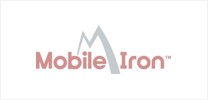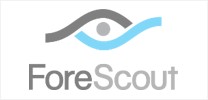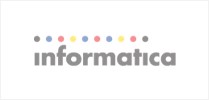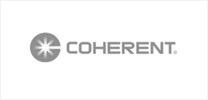Can you answer “yes” to any of these questions:
- Do you have limited access to real-time actionable data?
- Is your accounting team less productive than it should be?
- Are you overstaffed as compared with industry benchmarks based on revenue per employee?
- Are poor methodologies leading to higher costs in your accounting department?
- Are you burdened with inefficient manual processes that are difficult, error-prone, and require excess labor?
If you did, we need to talk. You’re likely struggling to make informed and accurate business decisions. Your margins are lower than they should be, and that’s leading to reduced profitability. Ultimately, that increases the business cost to attract new customers and maintain and improve customer satisfaction.
One of the solutions to these issues is a modern cloud-native financial management platform to provide:
- Out-of-the-box, fit-to-purpose automated workflows
- Real-time business analytics
- Self-service and mobile capabilities
- Forecasting to anticipate demand
- Seamless integration across systems, locations, and entities
What’s a platform like that worth to your business? In its recent report The Total Economic Impact™ of Sage Intacct, Forrester quantified the impact of Sage Intacct on accounting team productivity and reporting compliance. Let’s walk through the methodology it used to produce a real dollar figure.
Forrester interviewed four companies that switched from other systems to Sage Intacct. For their study, Forrester aggregated the interviewees’ experiences and combined the results into a single composite organization, a technology services company with global operations and headquarters in North America. The composite has 100 employees, generates $30 million in annual revenue, and grows 20% annually via acquisitions during the three-year TEI analysis period.
The four interviewed organizations said their accounting and financial systems were isolated, complex and problematic prior to deploying Sage Intacct. The financial processes resided across multiple platforms, such as enterprise legacy systems, bookkeeping software, spreadsheets and other applications. These systems included QuickBooks and Oracle NetSuite.
Lacking system consolidation and automation, the organizations used protracted manual processes to fill data gaps, often requiring additional labor to perform maintenance tasks, such as replicating the data in prior legacy and third-party software solutions or tracking contracts and invoices in individual spreadsheets.
After deploying Sage Intacct, the interviewees acquired visibility into their organizations’ financial performance and had confidence in their numbers due to the platform’s real-time data. They gained financial insights and the ability to parse the data, drill down on numbers, and isolate any issues with a particular number, which they could not do in their previous environments.
With this, Forrester calculated a $165,984 total three-year margin benefit gained due to increased accounting team productivity and improved reporting, with a present value of $137,593. (The total economic impact of all benefits quantified is valued at $2.1 million.) Let’s look at the details.
Evidence and Data
The interviewees stated that Sage Intacct’s integrated, fully automated multiple-entity reporting, based on GAAP’s revenue-recognition requirements, significantly improved the accounting team’s productivity and better prepared them for a business transaction such as an acquisition or divestiture.
- In legacy environments, the interviewees said reporting of revenue recognition consisted of an overly complex and tedious process and was often inaccurate due to the manual processes being managed in spreadsheets.
- In addition, these manual processes were prone to human error and meshed the data together at a macro level, making it difficult to get through due diligence required by investors versus providing the micro-level automated calculations required for proper revenue recognition.
- Also, interviewees reported that their prior systems lacked integration with their accounts payable and third-party CRM solutions, and as a result, accountants had to manually enter the data into multiple systems. This became particularly problematic when they experienced significant rapid growth that their prior systems couldn’t accommodate, putting a strain on their internal resources and costing them an excessive amount to maintain.
Modeling and Assumptions
The composite has two employees in accounting, handling accounts payable and ensuring reporting compliance per GAAP revenue-recognition principles.
- With Sage Intacct, accounting team members save 32 hours per week: 10 hours from elimination of duplicate data entry into multiple systems and spreadsheets, 16 hours from revenue allocation processes, and six hours from manual entry of accounts payable and reporting.
Risks
The ability to realize this benefit will vary according to:
- The organization’s GAAP and other reporting requirements for its investors.
- The necessary add-on modules capture additional reporting requirements, such as revenue recognition, multiple entities, and dimensions.
- The number of persons on the accounting/finance team dedicated to data consolidation, analysis, and reporting.
- Salary levels, depending on skills and geographical location.
To factor in these risks, Forrester adjusted this benefit downward by 5%, yielding a three-year risk-adjusted total present value of $137,593. The calculations assume a $35 hourly rate for a fully burdened accountant and two accountants.
As one of the interviewees noted, “There are some complicated things in GAAP rules that Sage Intacct handles very well. It reduces the amount of effort required from our team. I would have to hire another person or two to be able to calculate the revenue recognition.” The interviewee is a CFO at a cloud and software services company.
Unquantified Benefits
Interviewees mentioned the following additional benefits that their organizations experienced but were not able to quantify:
- Improved visibility and reporting in real-time to quickly analyze data and isolate any issues with numbers, locations, or products. This enables deeper dives into transactions to determine where problems occur, which is a function absent in prior systems. Furthermore, with Sage Intacct’s customized dashboard feature, executives have better visibility into the composite’s financial performance in real-time and the ability to drill down and get answers quickly without having to rely on the finance team. This level of transparency and detail allows them to make better decisions faster rather than waiting three weeks after the monthly close.
- With Sage Intacct, organizations experience greater flexibility in accessing and reporting the data in a more meaningful way. Sage Intacct allows finance teams to generate reports based on executives’ needs in real time with speed and ease. A CFO at a cloud and software services organization commented, “When my CEO asks for something, I feel pretty confident not only that I can get it but also that I can get it pretty easily.” The interviewees found Sage Intacct’s dimension module gives them the flexibility to do custom reporting, change how dimensions are used, and add new dimensions within the system at any point in time.
- The multiple-entity function effectively captures acquisitions and reports on company performance. Within Sage Intacct, the composite uses the multiple-entity function to manage acquisitions or divestitures and view domestic and foreign business-unit performance. The solution provides the flexibility to either fully absorb the acquired organization into the parent as a branch or keep it as a separate business unit while operating in multiple currencies and countries.
- Accounts payable and ACH transfers are managed easily and securely. Once vendors enter their information into the composite’s portal, the data is transferred to Sage Intacct in a secure environment and then uploaded to the composite’s bank automatically, eliminating any human access to sensitive information. The CFO of an insurance company noted, “Everything is completely secured and embedded.”
If you’d like more information on The Total Economic Impact™ of Sage Intacct from Forrester, I invite you to follow this link, where the analysts not only explore the impact of increased accounting team productivity and reporting compliance but also examine the impacts of:
- More accurate customer billing
- Automation and integration
- Sales team effectiveness
- Increased finance team efficiency and auditability
These combined benefits add up to $2.1 million and a return on investment of 441%. Imagine the impact on your company.













